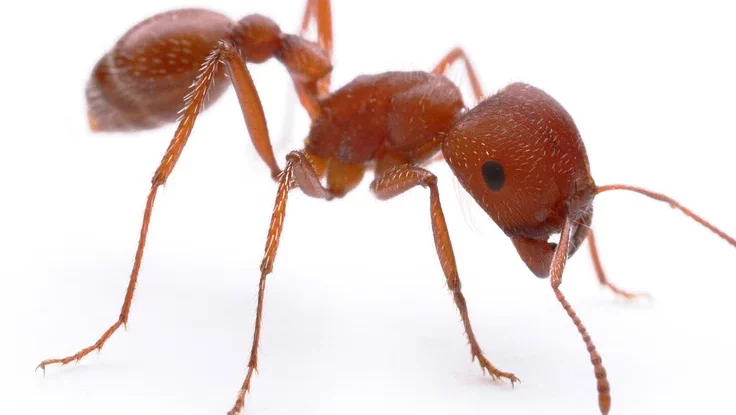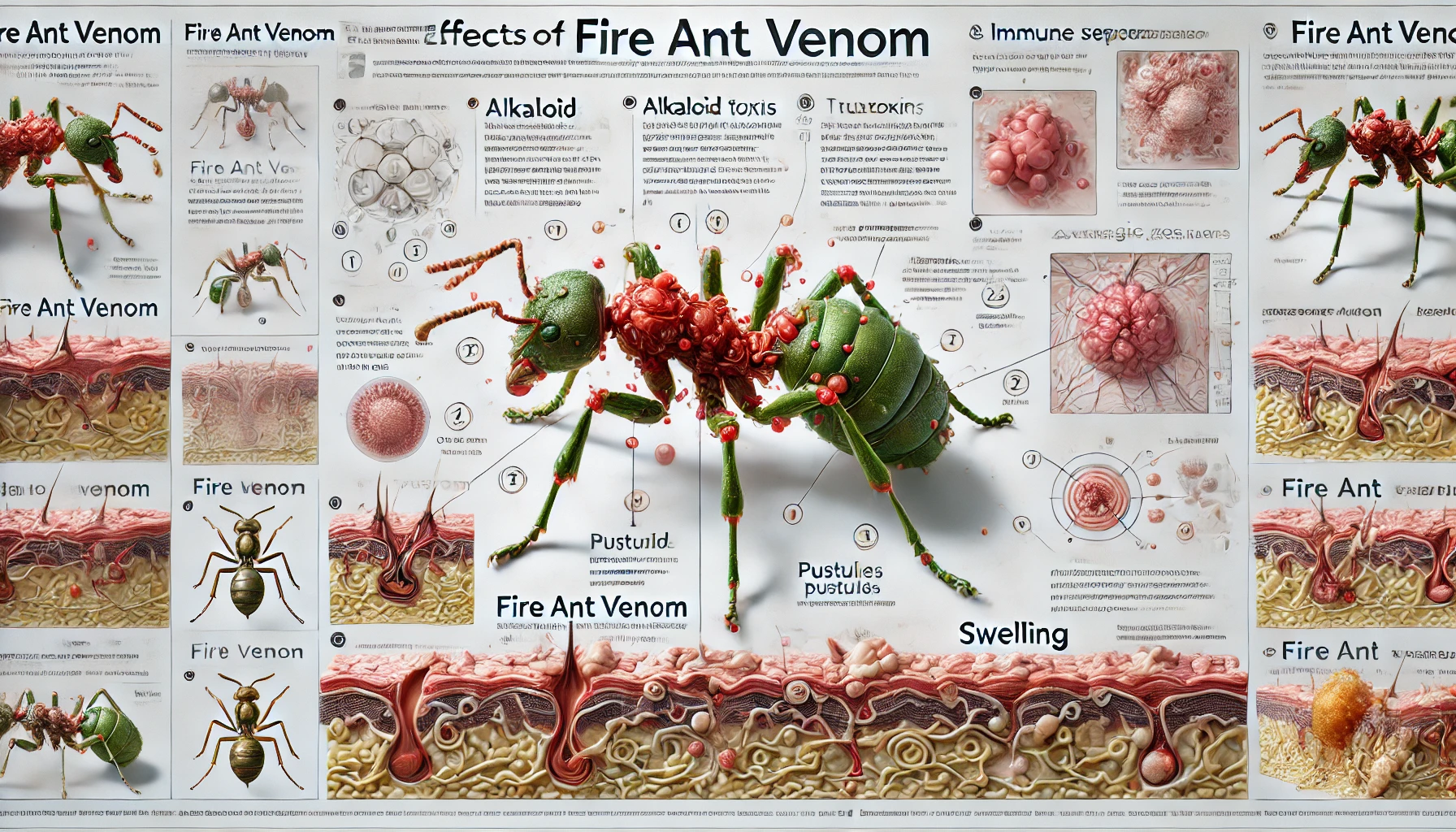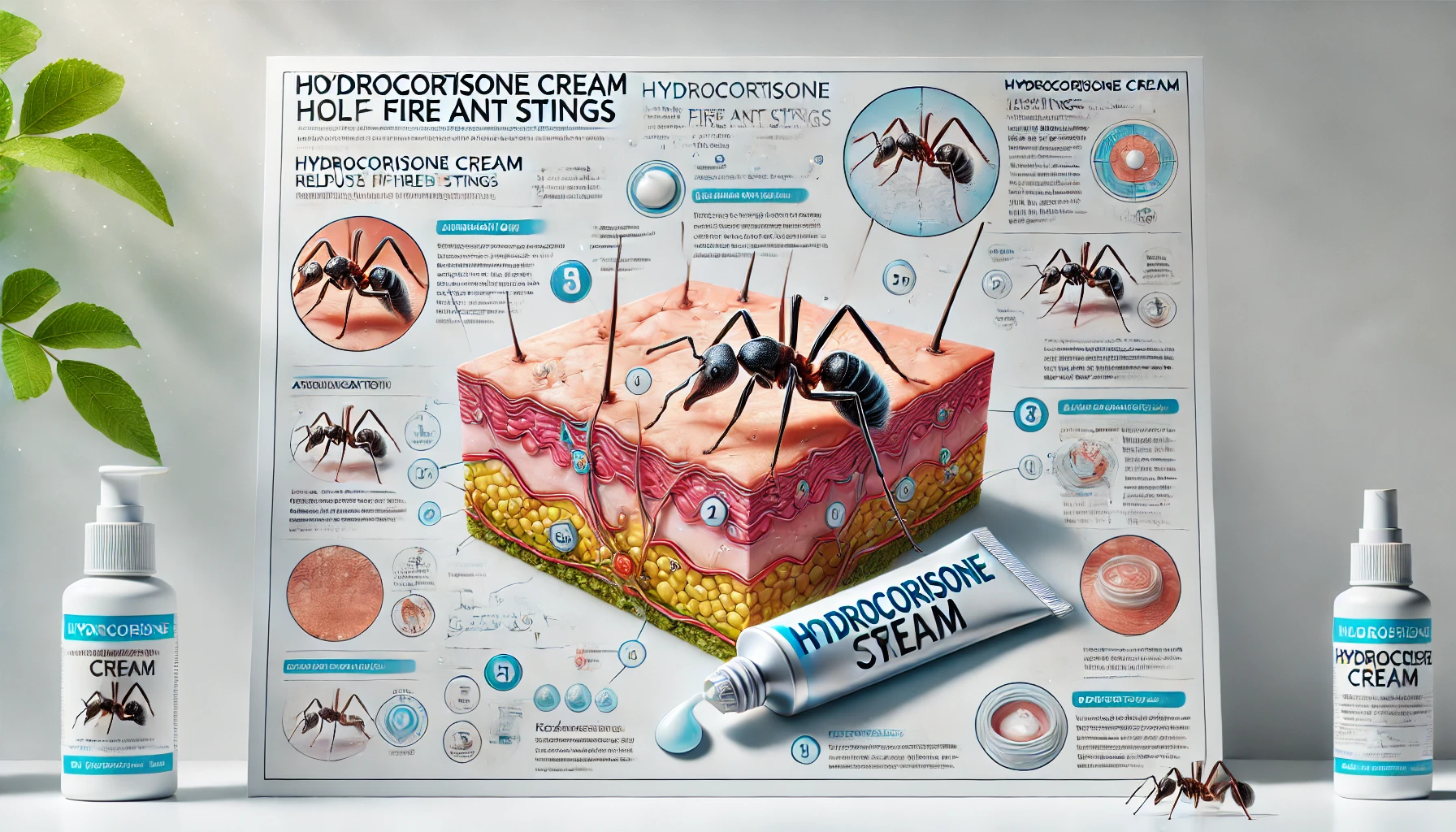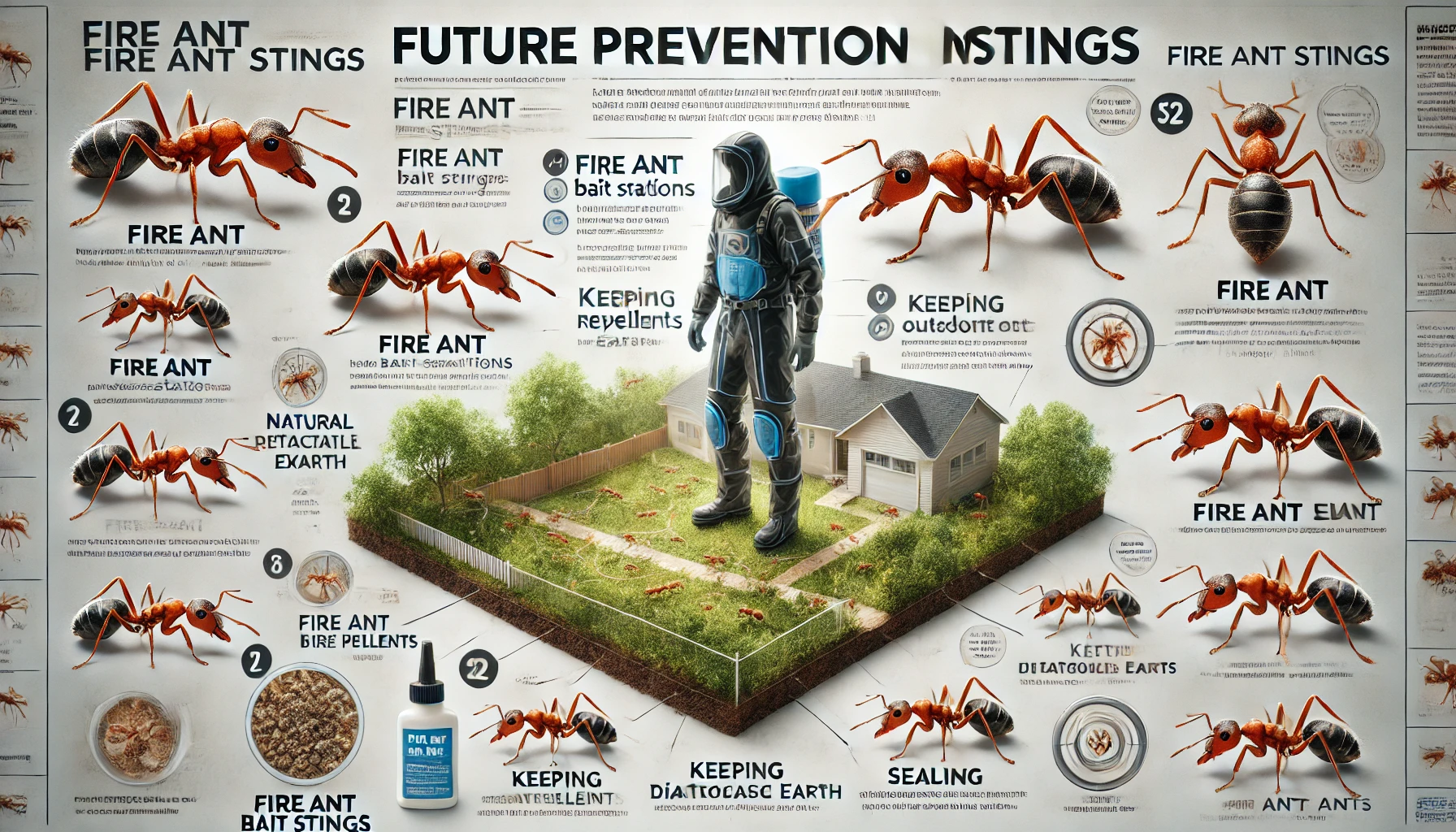Key Takeaways
- Fire ant bites cause immediate pain, itching, swelling, and potential allergic reactions.
- Immediate first aid includes washing, applying ice, and using soothing creams.
- Home remedies like hydrocortisone cream, baking soda paste, aloe vera gel, antihistamines, and oatmeal baths help alleviate symptoms.
- Seek medical help for severe reactions, widespread bites, signs of infection, or allergic symptoms.
- Prevent bites by wearing protective clothing, managing outdoor environments, and maintaining regular pest control.
 Fire ants are notorious in many US households, especially in the southern states, known for their aggressive nature and painful stings. Fire ant bites (technically stings) inject venom that can cause severe discomfort, itching, swelling, and even allergic reactions. To known the best home treatments for fire ant bites can help in minimizing pain, reducing inflammation, and boost healing, ensuring comfort and safety in your home.
Fire ants are notorious in many US households, especially in the southern states, known for their aggressive nature and painful stings. Fire ant bites (technically stings) inject venom that can cause severe discomfort, itching, swelling, and even allergic reactions. To known the best home treatments for fire ant bites can help in minimizing pain, reducing inflammation, and boost healing, ensuring comfort and safety in your home.
This article explores effective home remedies, immediate first aid measures, preventive strategies, and signs to watch for that indicates the upcoming need for medical attention.
Recognizing Fire Ant Sting Symptoms
- When a fire ant stings, it injects venom that immediately results in noticeable symptoms. Identifying these symptoms quickly is crucial to effective treatment.
-
Immediate Pain: A sharp burning sensation occurs at the sting site as the venom is injected.
-
Redness and Swelling: The affected area typically becomes red, swollen, and itchy shortly after the sting.
-
Blisters or Pustules: Small white pustules develop within 24 hours at the sting site, often signaling a reaction to the venom.
-
Itching and Discomfort: Persistent itching and irritation can last for several days, requiring soothing treatments.


Not getting a solution?
Get your free pest control estimate today!Severe Symptoms to Watch Out For
- Extensive swelling extending beyond the sting site.
- Difficulty breathing or swallowing.
- Dizziness or loss of consciousness (anaphylaxis).
Immediate First Aid for Fire Ant Stings
- Taking prompt action immediately after a sting helps minimize discomfort and potential complications:
-
Move Away Quickly: Step away from the area to prevent further stings. Fire ants often attack in groups, so leaving immediately reduces the number of stings you might receive.
-
Remove Ants Promptly: If ants are still clinging to your skin, gently brush or flick them off rather than slapping or smashing, which can provoke further stings. Stay calm to prevent panic and additional injuries.
-
Clean the Area Thoroughly: Immediately wash the sting area with soap and cool water to remove debris and venom residue, reducing the risk of infection.
-
Apply a Cold Compress or Ice Pack: Use ice wrapped in a clean cloth or a cold compress to reduce swelling, inflammation, and pain. Hold the compress for 15 minutes and repeat every hour as needed.
-
Elevate the Affected Area: If the sting is on a limb, elevate it above heart level to slow blood flow, reduce swelling, and provide faster relief.
-
Avoid Scratching: Despite the itching, refrain from scratching the area, as it can break the skin, increase irritation, and introduce bacteria that may lead to infection.
-
Apply Topical Antiseptic: Using an antiseptic cream or ointment, such as Neosporin, helps prevent infection if the skin has been damaged. Apply gently for a protective barrier.
-
Consider an Over-the-Counter Antihistamine: Oral antihistamines like diphenhydramine (Benadryl) or cetirizine (Zyrtec) help reduce swelling, allergic reactions, and itching. Follow the dosage instructions carefully.
Top Home Remedies to Treat Fire Ant Bites
Once you’ve administered initial first aid, several home remedies effectively soothe fire ant bites: 1. Cold Compress Applying ice packs wrapped in a towel reduces swelling, inflammation, and itching. Use for 10-15 minutes every hour initially. 2. Baking Soda Paste Mix baking soda with water to form a paste and apply it directly to the bite. Baking soda neutralizes venom acidity, reducing itching and inflammation. 3. Hydrocortisone Cream Over-the-counter hydrocortisone cream (1%) helps significantly reduce itching and redness. Apply twice daily to relieve discomfort. 4. Antihistamines
Oral antihistamines like Benadryl effectively reduce allergic reactions, itching, and swelling. Use according to package directions.
5. Aloe Vera Gel
Pure aloe vera gel has natural anti-inflammatory and soothing properties. Apply directly to bites given by these ants to soothe skin irritation and promote healing.
6. Oatmeal Baths
Colloidal oatmeal baths offer soothing relief, especially for multiple bites or widespread itching. Soak for 15-20 minutes daily as needed.
4. Antihistamines
Oral antihistamines like Benadryl effectively reduce allergic reactions, itching, and swelling. Use according to package directions.
5. Aloe Vera Gel
Pure aloe vera gel has natural anti-inflammatory and soothing properties. Apply directly to bites given by these ants to soothe skin irritation and promote healing.
6. Oatmeal Baths
Colloidal oatmeal baths offer soothing relief, especially for multiple bites or widespread itching. Soak for 15-20 minutes daily as needed.
 7. Apple Cider Vinegar
Dab diluted apple cider vinegar on the sting to neutralize venom, reduce swelling, and alleviate itching. Dilute with equal parts water and reapply as needed.
7. Apple Cider Vinegar
Dab diluted apple cider vinegar on the sting to neutralize venom, reduce swelling, and alleviate itching. Dilute with equal parts water and reapply as needed.
How to Prevent Infection After Fire Ant Stings
- Proper wound care prevents complications:
-
Avoid Scratching: Scratching can open the skin to infections. Keep fingernails trimmed and clean to minimize the risk.
-
Maintain Hygiene: Regularly clean the sting site with mild soap and water to prevent bacteria buildup.
-
Topical Antibiotics: If blisters break open, apply antibiotic ointments to reduce the chance of infection and promote healing.
When to Seek Medical Help
- Most fire ant bites can be treated effectively at home, but sometimes professional medical intervention is necessary:
-
Severe Allergic Reactions: Difficulty breathing, facial swelling, or faintness require immediate emergency care (call 911).
-
Infection Signs: Increasing redness, pus, severe swelling, fever, or worsening pain indicate potential infection and require professional medical attention.
-
Multiple Stings: Excessive bites can cause systemic reactions, making immediate medical attention necessary.

Preventing Future Fire Ant Stings
- Preventing bites altogether is always in our favour. Here are some practical tips which can be applied to avoid future encounters:
-
Wear Protective Clothing: When working or playing outdoors in fire ant-prone areas, wear closed-toe shoes, socks, and long pants tucked into boots.
-
Yard Maintenance: Regularly inspect and eliminate ant mounds using fire ant baits or treatments approved for home use.
-
Seal Entry Points: Regularly check and seal cracks or openings around your home to prevent ants from getting inside.
-
Professional Pest Control: Schedule routine pest control inspections and treatments to maintain a fire ant-free yard.
Visit our Species, Control, and DIY Guide sections for additional resources on ants and ways to tackle a ants infestation.





